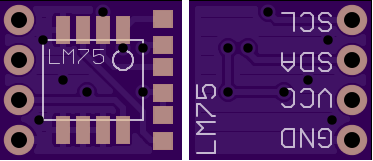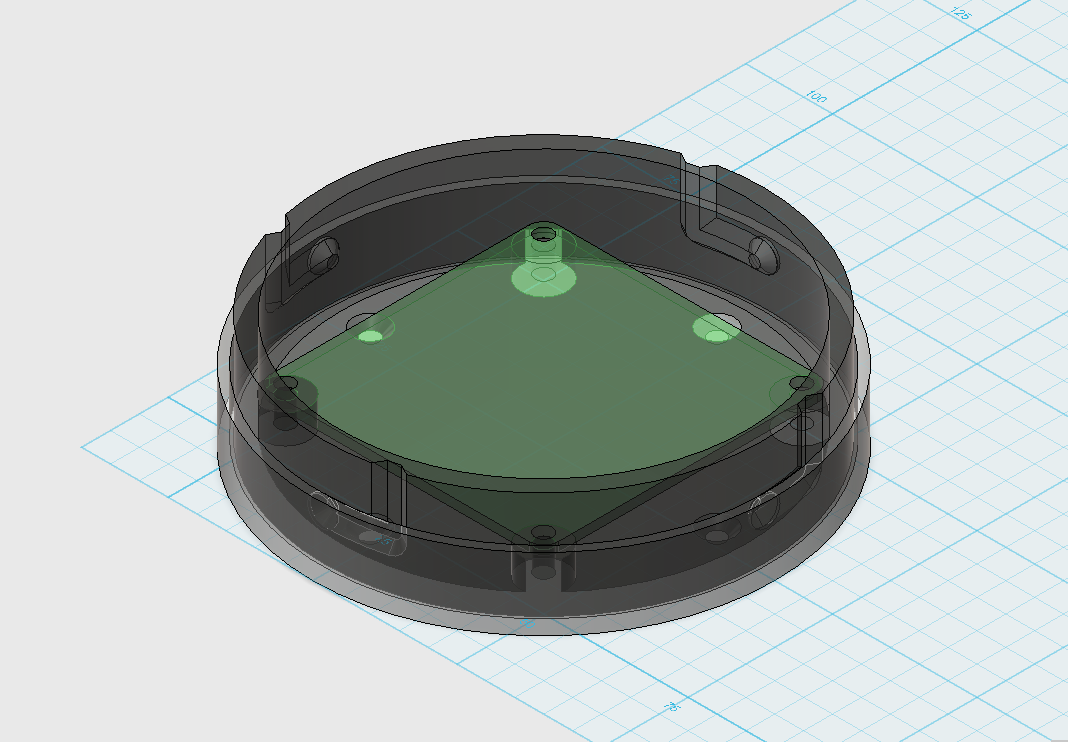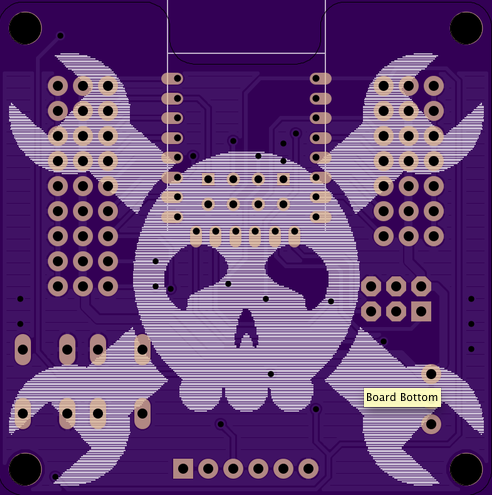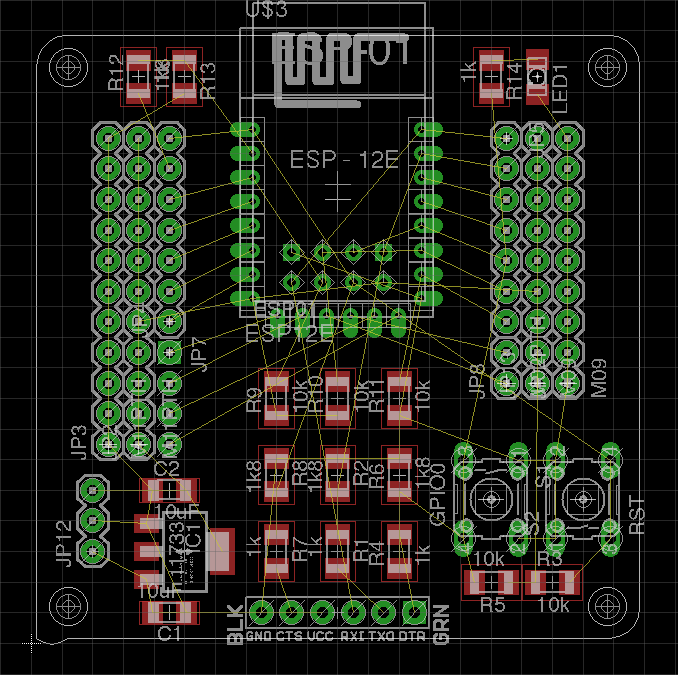-
LM75 breakout board
06/09/2015 at 21:07 • 2 commentsAs it happens to be, I still have some LM75 3.3V in my magic drawers - so I designed a little breakout IIC board with 0603 resistors, to also see If I'm able to solder those. It's not a #Charles Jr, but still small :)
![]()
-
designed a little case
06/05/2015 at 19:53 • 8 commentsUPDATE: I've just wasted 10 minutes looking for the files, and now that I've finally found them, I've added them to the file section. It's still not printed - so it is untested!
So while I'm waiting I thought I do a little exercise in 123D Design and make a little round case, that twist locks. Gonna print this sooner or later. 80mm in diameter. 4 screw holes for mounting the pcb and 4 for mounting on whatever you like. Probably should have designed the pcb in sick-of-beige standard. Anyway - had some fun :)
![]()
-
know your regulator
05/30/2015 at 14:43 • 0 commentsWhen "designing" [stealing] this board parallel to the talk for the #ESP8266-01 Breakout I placed an LD1117AS33TR in my schematics while Matt used an LM1117 on his board. At this time I was only looking for a 1117 in the eagle library and added it. Turns out that I'm still in luck, since both only need 2 capacitors and all I had to do to fix this is order some 100nF in 1206.
-
ESP-12-E is integrated - swag added
05/20/2015 at 22:38 • 0 commentsI tried to keep all names and values this time, this way it's probably easier to spot mistakes etc. I might get rid of those voltage dividers and opt for a straight 3.3V design. My 5V ftdi adapter broke and after some research about those switchable FTDI adapters I'm not afraid anymore, that the jumper only toggles the power voltages, but not the IO voltages. But the common chips used in those boards all feature a VBUS or VCCIO pin, that should be connected to that jumper as well - so yeah. I was about to design an adapter myself, but those adapters are just too cheap on ebay. The pin headers are a different most of the time, though. I've seen Ben Heck using the locking footprint for programming, so no header would have to be soldered.
![]()
![]()
-
new kid in town: ESP-12-E
05/19/2015 at 20:00 • 3 commentsI've added a 12-E footprint to the library I found on the internet (totally forgot where I found it). Right now I'm redoing the design for this board to support the additional SPI headers and the two extra GPIOs which can probably only be used with a ESP-12-D module? I'm confused, as always. GPIO4 and GPIO5 seem to be switched in the 12 vs. 12-E version.
![]()
-
first success
05/18/2015 at 18:27 • 0 commentsTo get reliable results with my boards, I had to play around with the #ESP8266-01 Breakout board and get it to work. Here are some tips that are probably only interesting for mac users.
I managed to upload the nodemcu bootloader on a mac, using the http://esptool.py (https://github.com/themadinventor/esptool) and the following command:
./http://esptool.py -p /dev/tty.usbserial-AH00ZRT7 write_flash 0x00000 ../../firmware/nodemcu_float_0.9.6-dev_20150406.binAnd we are in the blinking game! I was not running the right JDK on my mac, had to update to JDK 8 and add the paths to the shell script in order to start the jar file.
#!/bin/bash export JAVA_HOME=/System/Library/Java/JavaVirtualMachines/jdk1.8.0_45.jdk/Contents/Home export PATH=$PATH:/System/Library/Java/JavaVirtualMachines/jdk1.8.0_45.jdk/Contents/Home/bin java -jar "ESPlorer.jar"One note - may be I've inserted the LED the wrong way, but I had to inverse LOW and HIGH in the lua script example for the Breakout board.
-
Boards are ordered
05/16/2015 at 22:24 • 0 comments... and github repo is online. It might even work with auto reset - not sure yet. This would be a neat feature for flashing.
Ignore this ESP8266 board
I stole from every one. The huzza from Adafruit. Matts breakout board. Al1s board from here. NodeMCUs DevKit.
 davedarko
davedarko



